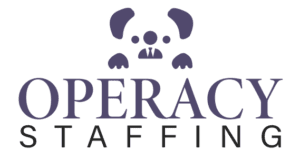
As businesses continue to embrace flexible and remote working arrangements, virtual teams have become more common than ever before. While this shift offers immense benefits—from cost savings to global talent access—it also brings unique challenges, especially when it comes to managing projects effectively.
Without physical offices, watercooler conversations, or face-to-face meetings, project execution in a virtual setting can easily turn chaotic. Delayed updates, miscommunication, lack of accountability, and shifting priorities can derail even the best of intentions.
But this chaos isn’t inevitable.
With the right virtual workforce solutions and modern project management strategies, businesses can not only overcome these challenges but thrive in a digital-first environment.
The Challenge of Going Virtual
In a traditional office, teams can quickly align goals through in-person discussions, spontaneous check-ins, and shared whiteboards. In virtual work environments, those touchpoints are replaced by emails, video calls, and project boards—which, without proper structure, can become fragmented.
Some common pain points include:
Poor communication between departments
Confusion about project ownership
Missed deadlines due to time zone differences
Difficulty tracking progress without face-to-face updates
Over-reliance on multiple disconnected tools
These hurdles impact productivity, morale, and ultimately, the success of the project. Businesses need to implement virtual workforce solutions that offer real-time access, clear communication paths, and structured workflows.
Implementing Smarter Project Management Strategies
To streamline projects in a virtual workspace, businesses need to shift from reactive practices to proactive planning. Below are key steps that enable teams to move from disorganised to structured workflows using effective project management strategies.
1. Standardise Processes and Tools
A common mistake in remote teams is letting every department or member use their own systems. Instead, choose one unified platform for task tracking, communication, and documentation.
Tools like Asana, ClickUp, or Monday.com are great additions to your stack of virtual workforce solutions. Document repeatable processes using templates and shared workflows so team members clearly understand expectations and next steps.
2. Set Clear Goals and Accountability
Clearly defined, measurable goals are essential to avoid confusion and keep teams aligned. Assign responsibilities and ownership of deliverables. This is a critical part of any successful project management strategy.
Hold weekly check-ins and make use of shared dashboards to track progress and maintain momentum—especially when team members are spread across multiple time zones.
3. Leverage Virtual Workforce Solutions for Seamless Collaboration
Smart virtual workforce solutions bring structure and cohesion to distributed teams. These typically include:
Centralised document storage (Google Drive, SharePoint)
Communication tools (Slack, Teams, Zoom)
Time tracking and scheduling software
Cloud-based project management tools
When integrated, these systems support real-time collaboration, reduce duplication, and allow everyone to stay updated regardless of location.
Technology Brings Clarity
Project leaders must embrace automation and integration. With the right virtual workforce solutions, teams can reduce repetitive tasks, stay focused, and collaborate in real time.
Automation also plays a vital role in modern project management strategies. Setting up recurring tasks, status updates, and calendar reminders ensures that important steps aren’t missed. Real-time dashboards replace time-consuming status meetings and allow leaders to monitor progress at a glance.
Additionally, platforms with built-in file sharing, @mentions, and comment threads promote faster decisions and fewer misunderstandings.
Create a Culture That Supports Virtual Success
Beyond technology, businesses need to foster a team culture that values trust, accountability, and communication. Strong project management strategies should include clear communication protocols, flexible work policies, and recognition of team achievements.
Encouraging informal interactions, like virtual coffee breaks or end-of-week wrap-ups, helps build rapport and reduce feelings of isolation. A healthy culture supports stronger performance in both short-term tasks and long-term goals
Long-Term Benefits of a Streamlined Virtual Approach
Companies that implement structured virtual workforce solutions and effective project management strategies enjoy:
Faster project turnarounds
Greater employee satisfaction
Cost-effective operations
Access to diverse global talent
Most importantly, these businesses are more resilient. They can operate efficiently regardless of where their team members are located or what external challenges arise.
Final Thoughts
Remote work is here to stay. But without structure, it can quickly become overwhelming.
With the rightproject management strategies and reliable virtual workforce solutions, businesses can achieve clarity, consistency, and measurable success. The tools are available—what matters most is how you implement them.
It's time to leave behind the chaos and embrace a smarter, clearer way of working.
